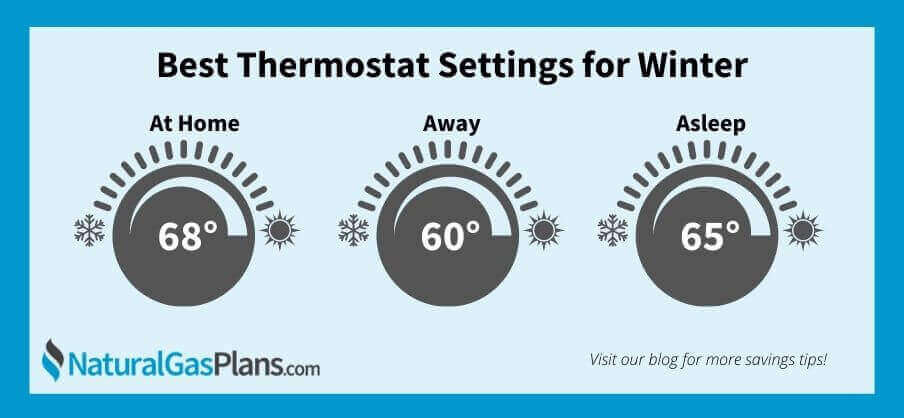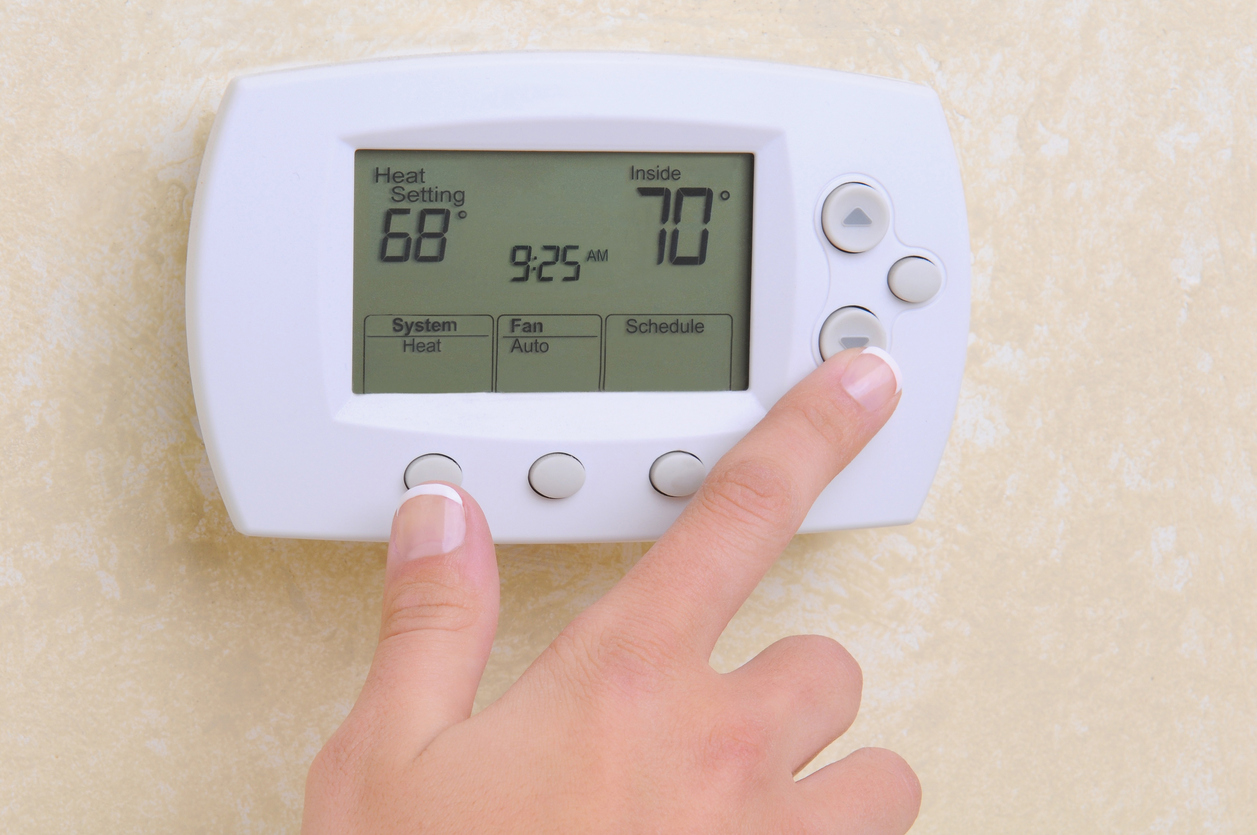What Temp Should Thermostat Be In Winter

Winter has arrived, and with it, the annual battle against the cold. One of the most common household frustrations during this season is a heating system that just doesn't seem to be doing its job properly. Imagine waking up to a chilly house, despite having the thermostat set to what you *think* should be a comfortable temperature. Before you call in a costly HVAC technician, let's explore some simple troubleshooting steps you can take to diagnose and potentially fix the problem yourself.
Understanding Your Thermostat and Ideal Winter Temperatures
The first step is understanding what your thermostat is actually doing. It's essentially the brain of your heating system, telling your furnace or heat pump when to turn on and off to maintain your desired temperature. Different types of thermostats exist – from simple manual models to sophisticated smart thermostats – but the underlying principle is the same.
So, what temperature *should* your thermostat be set to in winter? This is a surprisingly subjective question, but generally, most experts recommend setting your thermostat to around 68°F (20°C) when you're home and awake. This provides a comfortable balance between warmth and energy efficiency.
However, you can save a significant amount of money on your heating bill by turning the thermostat down when you're asleep or away from home. Studies show that for every degree you lower the thermostat for eight hours, you can save around 1% on your heating bill. A good target temperature for when you're away or asleep is around 62°F (17°C).
Troubleshooting: My House is Cold Despite the Thermostat Setting
If your house is consistently colder than the thermostat setting, even after allowing time for the system to heat up, follow these troubleshooting steps:
1. Check the Obvious: Thermostat Settings and Batteries
This might seem basic, but it's where most problems begin. Double-check the following:
- Is the thermostat set to "Heat"? It sounds silly, but it's easily overlooked, especially if you've recently switched from cooling to heating.
- Is the temperature setting actually *higher* than the current room temperature? The thermostat won't kick on if it's already warmer than your desired setting.
- Is the thermostat in "Hold" mode (or a similar setting that overrides your schedule)? If so, adjust it to follow your programmed schedule or manually set the temperature.
- Check the batteries! Many digital thermostats rely on batteries. Low batteries can cause inaccurate readings or prevent the thermostat from communicating with the heating system. Replace the batteries with new ones, even if the display seems to be working. Use the correct type of batteries specified in your thermostat's manual.
2. Inspect Air Vents and Registers
Make sure that air vents and registers are open and unobstructed. Furniture, rugs, or curtains can block airflow, preventing heat from circulating properly throughout the room. Remove any obstructions and ensure that air can freely flow from the vents.
Also, check if any vents are closed in rooms you're actively using. While it might seem like a good idea to close off unused rooms, this can actually disrupt the balance of your heating system and make other rooms colder.
3. Examine the Furnace Filter
A dirty furnace filter is a common culprit behind heating problems. A clogged filter restricts airflow, forcing your furnace to work harder and less efficiently. This can lead to reduced heating output and even overheating. Replace your furnace filter every 1-3 months, especially during the heating season.
To replace the filter:
- Turn off the furnace! Find the power switch, usually located on the side of the furnace, and switch it to the "off" position.
- Locate the filter compartment. This is typically a slot or door near the blower motor.
- Remove the old filter. Note the direction of airflow (usually indicated by an arrow on the filter).
- Insert the new filter, ensuring the arrow points in the correct direction.
- Close the filter compartment and turn the furnace back on.
4. Check the Pilot Light (If Applicable)
If you have an older furnace, it may have a pilot light. A pilot light is a small, constantly burning flame that ignites the main burners when the thermostat calls for heat. If the pilot light is out, the furnace won't work. Be extremely cautious when dealing with gas appliances. If you're uncomfortable or unsure, call a qualified technician.
To relight the pilot light (if you're comfortable doing so):
- Turn off the gas to the furnace. Locate the gas valve, usually near the furnace, and turn it to the "off" position. Wait at least five minutes to allow any accumulated gas to dissipate.
- Locate the pilot light assembly. This is usually a small opening near the main burners.
- Follow the instructions on the furnace to relight the pilot light. Most furnaces have a button or knob you need to press and hold while simultaneously igniting the pilot light with a long-handled lighter or match.
- Once the pilot light is lit, continue holding the button or knob for about a minute to allow the thermocouple to heat up. The thermocouple is a safety device that shuts off the gas if the pilot light goes out.
- Release the button or knob. The pilot light should remain lit. If it goes out, repeat the process. If it continues to go out, there may be a problem with the thermocouple, and you should call a qualified technician.
- Turn the gas valve back to the "on" position.
- Turn the furnace back on.
5. Inspect the Condensate Drain (For High-Efficiency Furnaces)
High-efficiency furnaces produce condensation as part of their operation. This condensation needs to be drained away through a condensate drain. If the drain is clogged, it can cause the furnace to shut down. This is more common in colder climates where the drain line can freeze.
To check and clear the condensate drain:
- Locate the condensate drain line. This is usually a small PVC pipe that runs from the furnace to a floor drain or condensate pump.
- Check for any visible clogs or blockages. You may be able to clear small clogs with a wire or stiff brush.
- If the drain is frozen, try to thaw it with warm (not hot) water. Pour warm water over the frozen section of the pipe until it thaws. Avoid using boiling water, as it can damage the PVC pipe.
- Consider installing heat tape around the drain line to prevent future freezing.
6. Check for Drafts and Air Leaks
Even if your heating system is working properly, drafts and air leaks can make your house feel colder than it should. Seal any gaps around windows, doors, and other openings with caulk or weather stripping. Install door sweeps to prevent drafts under doors. These simple measures can significantly improve your home's energy efficiency and comfort.
7. Thermostat Location
Is your thermostat located in a bad spot? Direct sunlight, proximity to a drafty window or exterior door, or being near a heat source (like a lamp or appliance) can all throw off its readings. Consider relocating the thermostat to a more central location on an interior wall, away from these influences.
When to Call a Professional
While these troubleshooting steps can resolve many common heating problems, some issues require the expertise of a qualified HVAC technician. Never attempt repairs that involve electricity, gas, or complex mechanical parts if you're not comfortable or experienced.
Call a professional if:
- You smell gas. Evacuate the house immediately and call your gas company or 911 from a safe location.
- You suspect a carbon monoxide leak. Install carbon monoxide detectors and evacuate the house if the alarm sounds.
- The furnace makes unusual noises, such as banging, grinding, or screeching.
- The furnace cycles on and off frequently (short cycling).
- The furnace is not producing any heat at all, even after checking the obvious issues.
- You've tried the troubleshooting steps above and the problem persists.
- You are uncomfortable working with gas or electrical components.
Preventive Maintenance for a Warm Winter
The best way to avoid heating problems in the winter is to perform regular preventive maintenance. Here are a few tips:
- Schedule an annual furnace inspection and tune-up. A qualified HVAC technician can identify and address potential problems before they become major issues.
- Change your furnace filter regularly. As mentioned earlier, a clean filter improves airflow and efficiency.
- Keep your vents and registers clean and unobstructed.
- Seal any drafts and air leaks.
- Consider installing a programmable or smart thermostat. These thermostats can help you save energy by automatically adjusting the temperature when you're away or asleep.
Conclusion
Maintaining a comfortable temperature in your home during the winter doesn't have to be a constant struggle. By understanding your thermostat, performing basic troubleshooting steps, and knowing when to call a professional, you can keep your heating system running smoothly and efficiently all season long. Remember to prioritize safety when working with gas and electrical appliances, and don't hesitate to seek professional help when needed. A little proactive care can save you money, energy, and a whole lot of discomfort.










